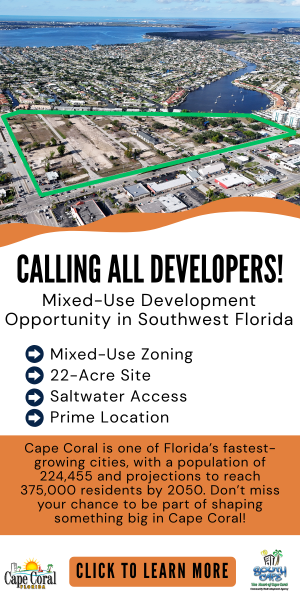An Expanding Role for Public Art

Creative expression can build a positive connection to a project for tenants and end users.
After a long period dominated by COVID-19’s social distancing, which led to a renewed appreciation of the outdoors, commercial real estate owners and developers, and the cities in which they operate, are looking at public art in new ways. The longtime strategy of maximizing the art spend to achieve project goals is adding new layers: Strong community engagement and storytelling that better connects the commercial real estate to users, shoppers and visitors, and a differentiating amenity for branding and attracting knowledge workers in post-pandemic return-to-office efforts.
Project sponsors have already been incorporating public art into their marketing efforts to fill up office and mixed-use projects. For example, Mack-Cali REIT promoted “Ziggy,” a distinctive public art display by Hou de Sousa, as one of many attractions in re-starting its 4 million-square-foot Harborside project in New Jersey.
“The repositioning of Harborside aligns well with our tenants’ return to work,” said Edward Guiltinan, Mack-Cali's senior vice president of leasing, in a release. “In addition to providing first-class office space, we are fortunate to be able to offer wide-ranging amenities and outdoor space for our tenants to enjoy.”
Site-specific art incorporated into the architecture and public spaces creates opportunities for community dialogue, shared cultural experiences and civic engagement. Whether driven by percent-for-art requirements, local public dollars or a developer’s own commitment to the arts, public art can accomplish multiple goals and enhance values with proper planning and design.
Community Connection
In the crucial step of community outreach and constituent research for public art, developers and designers can engage diverse interests and groups so that the development creates artwork that appeals to a broad local audience. And a diverse, inclusive approach to outreach can support pre-development goals such as entitlements or secondary redevelopment projects.
“One of the most rewarding ways to add meaning to outdoor spaces is by incorporating art features,” said Casey Case, president of Gates + Associates, a landscape architecture and urban planning firm. “Developers and tenants in adjacent commercial real estate projects also benefit from public art that is educational about the property and enhances the dwell time of shoppers and visitors.”
Gates worked with artist Gordon Huether on his design of “River of Light and Mountain Range” at John Muir Medical Center in Walnut Creek, California. It incorporates the hospital’s namesake, who appreciated the state’s natural beauty, and echoes nature’s role in health and wellness. At the same time, the football-field-long installation frames the entrance to the hospital and supports wayfinding.
Art for Storytelling and Social Engagement
Public art can also tell a deeper story about a project or community that informs as it also entertains and engages passersby. Last year, the town of Midland, Ontario, near Toronto, installed the 25-foot-tall “Sown,” designed by local artists Camille Myles and Holly Archer. The five circular pillars topped by an organic shape of faceted, reflective steel capture the rich local history in logging, shipping, the railway, agriculture and manufacturing, while also reflecting its early indigenous roots and the growth and diversity of the community today.
If planned well, public art’s objectives can span the needs of the project, the development, the community and more. Toni Sikes, CEO of public-art facilitator CODAworx, says public art is increasingly seen as a way to connect people and cultures amid social change.
“Beautifying public spaces is only one purpose for making art, which can also serve as a symbol of a cause, be a reminder of the past, or alter our reality,” she said. “This ability art has to transmit stories should not be underestimated. It influences our cultures, how we think about our societies, and the directions movements take.”
How to Make Art Stand OutAccording to public art designer Gordon Huether, who has completed hundreds of installations for developers, cities and institutions, the best results occur when he’s brought into the early stages of a real estate project. “In my work, there’s no greater joy than creating an installation that meets business objectives and also later seeing how it grabs people who pause to take a look, or think and discuss what it says to them,” he said. “Site-specific art has such strong drawing power, and it can be welcoming and engaging for people returning to the workplace or coming back to their favorite shopping or dining destinations.” Among Huether’s recent commercial real estate assignments are “Silver Lantern,” a signature branding installation evoking the spark of innovation in Silicon Valley for Jay Paul Company’s newest office park; “Infinity,” a 60-foot curved Corten steel identity piece for the new Stanly Ranch Auberge Resort near San Francisco; and “Glass Forest” at TIAA-CREF headquarters in Charlotte, North Carolina. Huether offers these tips for optimizing public art:
|
Ron Heckmann is a marketing consultant and writer/journalist for the commercial real estate industry.




